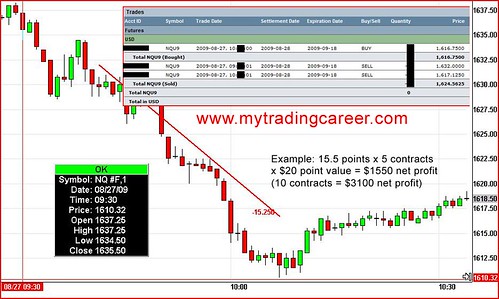One of the key findings of behavioral finance is that emotion is a primary driver of our biases and decision making.
For example, one tenet of behavioral finance is the concept of "anchoring". When you decide whether to sell an investment your instinct is to look at the price you paid for the investment. If the price is down 10% your investment decision will be different than if it's up 10%. But the price that you actually paid is meaningless information for answering the question of "as of today, is this stock a a good investment?".
Behavioral finance is a long and rich topic and one that I've spent a lot of time studying. I encourage you to also study it and develop your own conclusions. But, to cut to the chase, here are my three best time-tested methods for removing emotion from your stock trading.
1 Wait to Buy. If you think you've found an excellent new stock investment good for you. However, do you really have to buy it today? What if you put it into a spreadsheet and track it for a set period of time (I use one week) before you buy? This simple rule goes a long way towards countering a heart-driven investment decision. If your idea is good, it will still be there in a week.
2 Diversify. If one stock is 50% of your portfolio then you simply cannot make rational investment decisions about it. For example, what if it goes down 80% in value? It's a lot more difficult to admit you are wrong and make the sell decision if you're sitting on losses equal to 40% of your portfolio (losses =80% *50%). In fact, for me, the correct diversification level that removes all emotion from the process is 1% implying 100 investments. This means that when I buy something I only invest 1% of my portfolio. If the stock goes down in value I can make a sane sale decision because it's actually a small part of my portfolio.
And finally, my most important lesson:
3 Fully Automate Your Sell Decision. This one rule has helped me more than any others. You can pick your own automation rule but here's mine -- if the price goes down 10% from the highest price the stock has reached since I bought it then I sell. That is the only condition under which I sell. This translates into "sell your losers, keep your winners" which is a well-known stock dictum. However, the important thing for me is not that it is some sort of "magic bullet" but that it removes all emotion. I never am tempted to "double down" -- it simply is not allowed. I'm never tempted to say "I'm right and the market's wrong" -- it's not allowed. From my perspective, when I make an investment, I will either be (1) right or (2) wrong. And, the only thing that matters in determining whether I'm right or wrong is the price of the stock. Automation of the sell decision insures that if I'm wrong I'm out and if I'm right I'm in until such time as I'm wrong. The market is always right and it alone confirms whether I am too.
Happy Investing!
recent listings by penny stock promoters and the investor relations firms who pay them

No comments:
Post a Comment